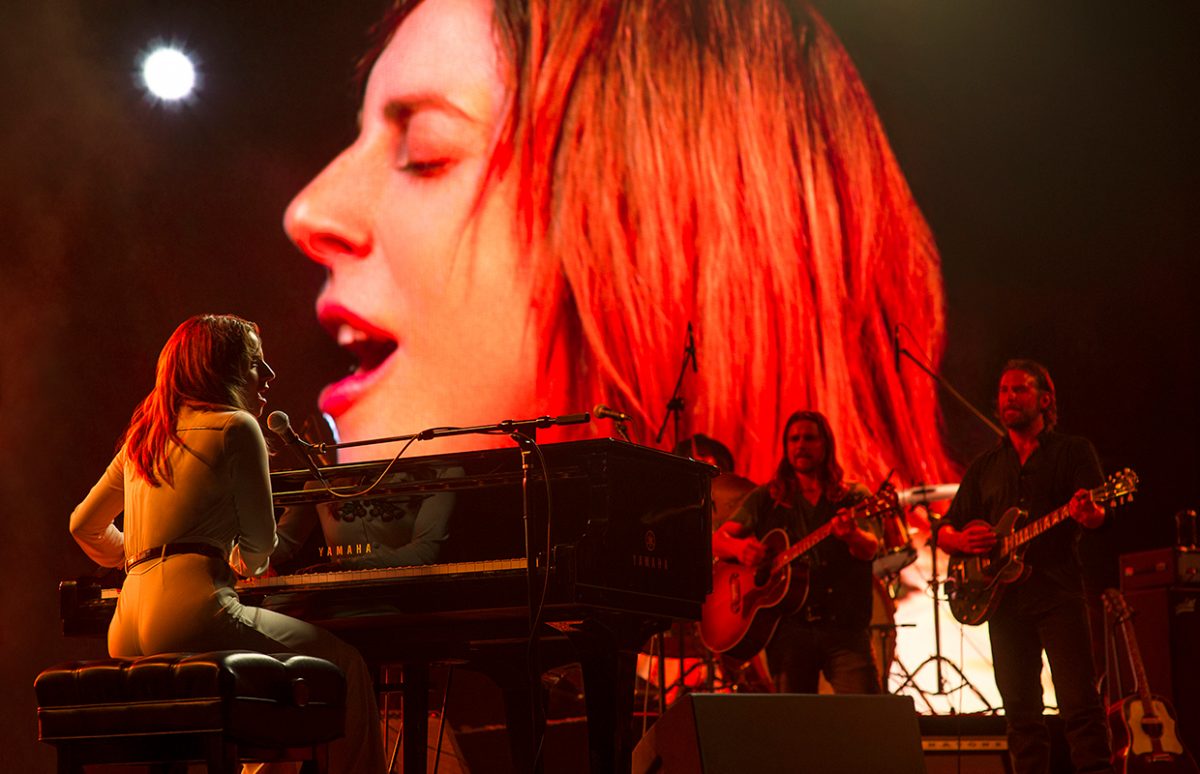A Star Is Born is so popular with Hollywood that the new version with Lady Gaga and Bradley Cooper is the fourth feature film based on the "rags to riches" fame story. We thought it would be interesting to compare the trailers for the four versions.
The first two versions of the story are set in the film industry, while the two more recent versions transpose it into the music industry.
Fredric March and Janet Gaynor (1937)
Since the original story is set in Hollywood, the first two film version trailers play on this, taking you "behind the scenes", making them almost a film within a film.
In the first version, the scene is very literally set in Tinseltown as the first words spoken are, "Before you likes the most glamorous city on Earth, Hollywood, California."
The voiceover, in true Hollywood booming style, is very present. And big slogans cover the screen at regular intervals, like, "They come to you in Hollywood's first true story."
The first half of this trailer could be a "making of" sequence and there is a lot of irony and metatext. We see star Janet Gaynor in the make-up department, "a Janet Gaynor never before seen on the screen", the make-up artist clearly trying out different shapes of eyebrows to paint on her face.
Then we are told that Fredric March is co-starring with her, "More swashbuckling and more likable than ever before." This over a shot where he is looking rumpled and subdued, clutching a bottle of champagne.
James Mason and Judy Garland (1954)
The second version is a musical, and was billed as star Judy Garland's comeback after a four-year break. The first part of the trailer is very much focused on Garland the star as opposed to her character (although since her character is a singing filmstar the two do blur.)
Here onscreen slogans take the place of the voiceover, heralding, "The most awaited event in entertainment history."
Then voiceover takes over in a similar tone, "You'll see it in the richness so lavishly poured into every scene," still talking about the making of the film and the stars.
It is not until halfway through that there is any dialogue from the film, and then a medley of extracts from the songs.
Kris Kristofferson and Barbra Streisand (1976)
In this version, the two protagonists are rock/pop singers.
This time the trailer focuses on the story of the film. The characters are mentioned in the voiceover rather than the actors, setting the scene, "John Norman Howard was once the best but he was burning out, until he met Esther Hoffman."
The first part of the trailer is very soft, with a love story atmosphere, then there is a sudden change at 2:27, and it almost seems to be another film, an action movie, with Kris Kristofferson's character driving fast sports cars, and riding a motorbike onto a stage as he descends into alcoholism.
Bradley Cooper and Lady Gaga (2018)
The latest remake is closest in story to the third version. Both protagonists are singers and it is set in the world of music – specifically country music this time.
In contrast to the other trailers, this one lets the film tell the story. There is no voiceover and the only speaking is dialogue from the film. We don't really see Bradley Cooper's character's fall from grace, but there are hints (we see him open a bottle of spirits near the beginning, his friend says he is worried about him, Lady Gaga's character shows frustration towards the end.)
An excellent language activity would be to have pupils voice this trailer – either as voiceover like the other ones, or have them simply try to tell the story that is playing out in front of their eyes.
Compare and Contrast
Depending on students' level they can compare two or more trailers simply on a formal level: images, use of onscreen text and/or voiceover, length, music… or more in detail on what is said.
They can also be asked to say which type of trailer would more tempt them to see a film. Are they more interested in the story the film tells, or the stars who are in it? They could be asked to find examples of trailers that attract them to, or turn them off a film.
A more advanced level would be to imagine how they would make a trailer.
Lycée level literature or cinema students could do a very rich analysis of the first trailer, which has lots of implicit meaning.
Copyright(s) :
All images: © 2018 WARNER BROS. ENTERTAINMENT INC. AND METRO-GOLDWYN-MAYER PICTURES INC. ALL RIGHTS RESERVED






